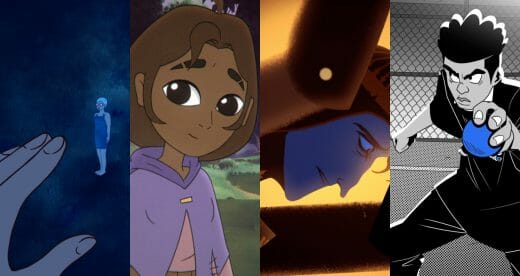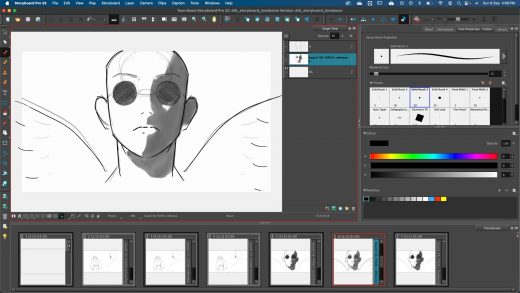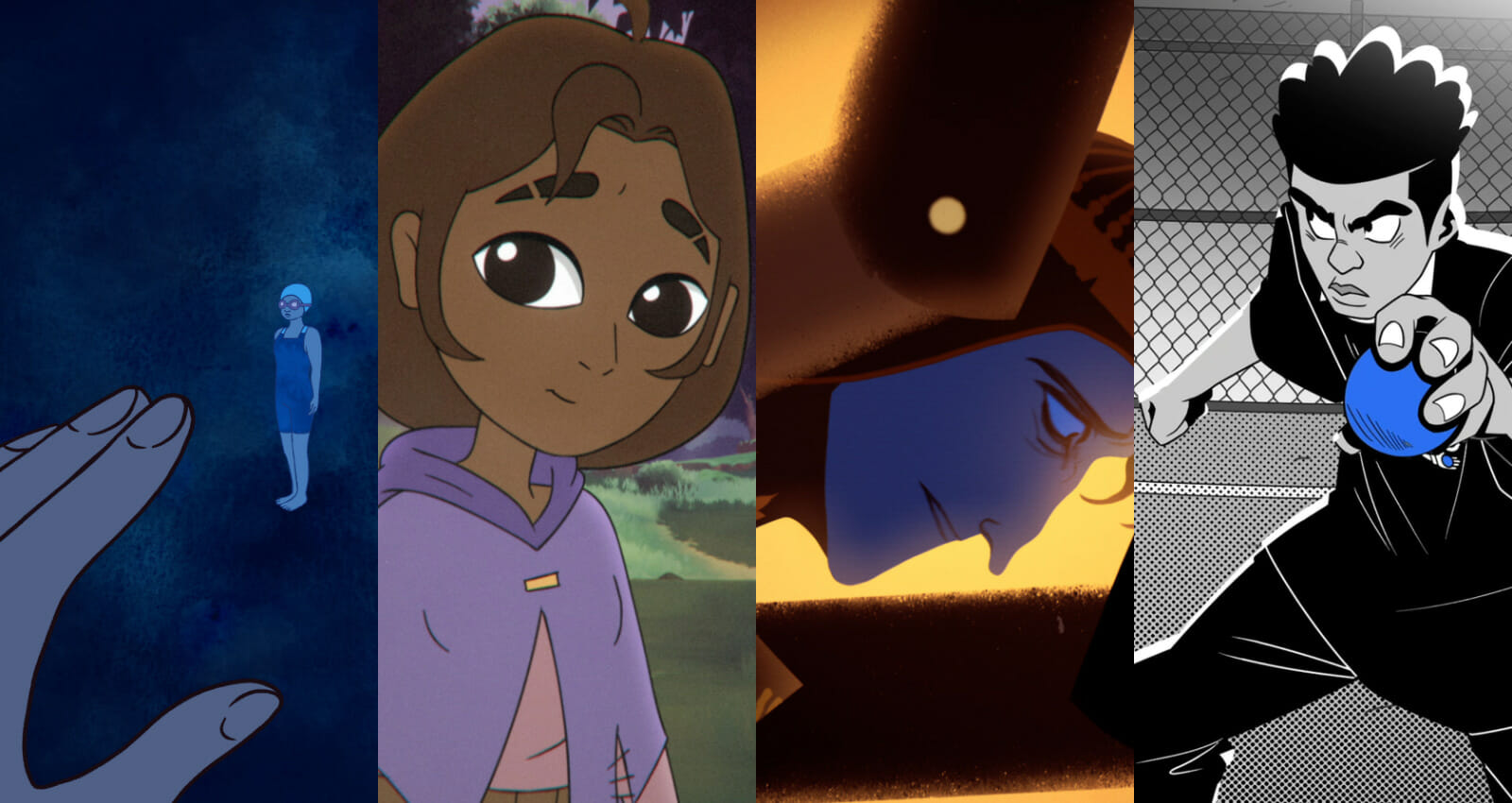
The Animation Shorts Program from Max and Warner Brothers Discovery Access showcases an anthology of short films, titled Only You: An Animated Shorts Collection. The eight shorts were made by 12 artists from communities underrepresented in the animation industry. These artists worked, either solo or in pairs of two, on developing their own short films.
The goal of the program was to help foster access for talent from underrepresented communities in the animation industry. The artists were selected in 2022 for a year-long program that provided a production budget, mentorship, training, as well as all the tools required to produce an original animated short. The artists were paired with mentors from Max, Adult Swim, Warner Animation Group and Rooster Teeth, and their films were supported by producer Amanda Miller.
The films were screened at the Stuttgart International Animation Festival at the end of April 2023, and the completed series is now streaming exclusively on Max (in the US) and on Crave (in Canada). We caught up with the 12 artists who participated in the program to learn about their journey into animation, their experiences in the Animated Shorts Program, and what’s next for their animation careers. Read on to learn about each short film in the Only You series, and the artists behind them!
What’s a story Only You can tell? Inspired by this prompt, a diverse group of artists bring their personal tales to life across a spectacular range of animated styles.
Episode 1 – Burning Rubber
Chris Fequiere’s episode tells the story of Duane Ruiz, who is out of college and out of options. Down on his luck, he has to choose between responsibilities at work and home or competing in the high-stakes Burning Rubber Wallball (AKA NYC handball) tournament.
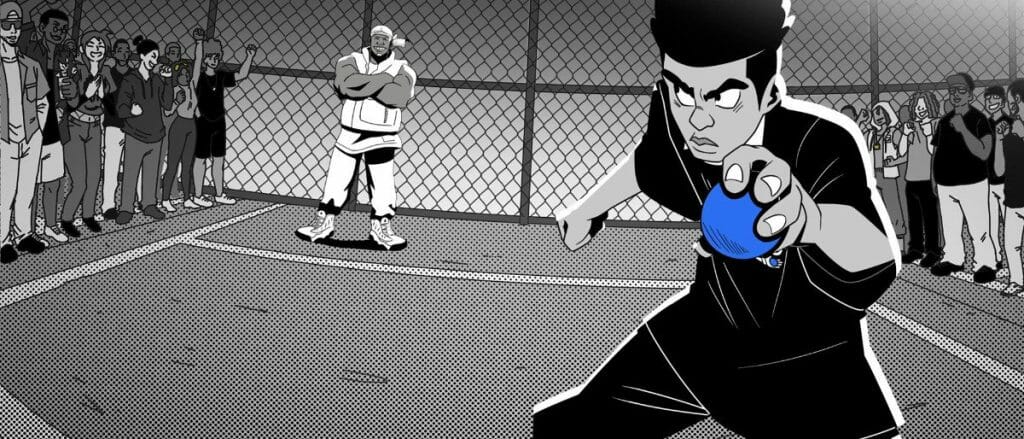
Tell us about your journey into animation. What inspired you to become an animator, how did you learn the craft, and what kind of animation work do you do now?
Chris: Growing up I was very much into everything ‘nerd culture,’ like comic books, cartoons, and action figures. That turned into a passion for storytelling, taking me to college at the School of Visual Arts in NYC and then to an internship at Marvel Comics.
Creating comics was fun but not fulfilling for me. I wanted to see movement in my art. It wasn’t until I met my wife that I got my first animation job, and I was immediately hooked. We’ve been in the business going on 12 years and it continues to be an amazing career.
What resource provided by this program was the most helpful or beneficial to you in making your short?
Chris: The opportunity to share a story “Only You” can tell has been invaluable. I have been telling stories for large brands throughout my career, but being given the chance to share my own story with a global audience has been incredible.
What has been your biggest lesson or takeaway in participating in the Max and WB Discovery Access Animated Shorts Program?
Chris: A lot has happened in the animation community this year and we all have gone through some ups and downs. WB Discovery’s Access Animated Shorts Program proves that there is a desire to promote and share unique voices and ideas. I feel audiences are matching that passion, which will help grow a new frontier in adult animation.
What’s next for you in animation?
Chris: Growth! I would love to turn Burning Rubber into a series and apply my unique point of view to future and growing IPs. Now more than ever, this feels possible.
Episode 2 – Welcome to 8th Street
In Yoo Lee and Xin Li’s episode, newcomers attempt to settle into their New Jersey neighborhood on 8th Street. Some odd encounters make them question their decision to move – until a wild turkey shows up on their block. The questions below were answered by Creator and Director Yoo Lee.
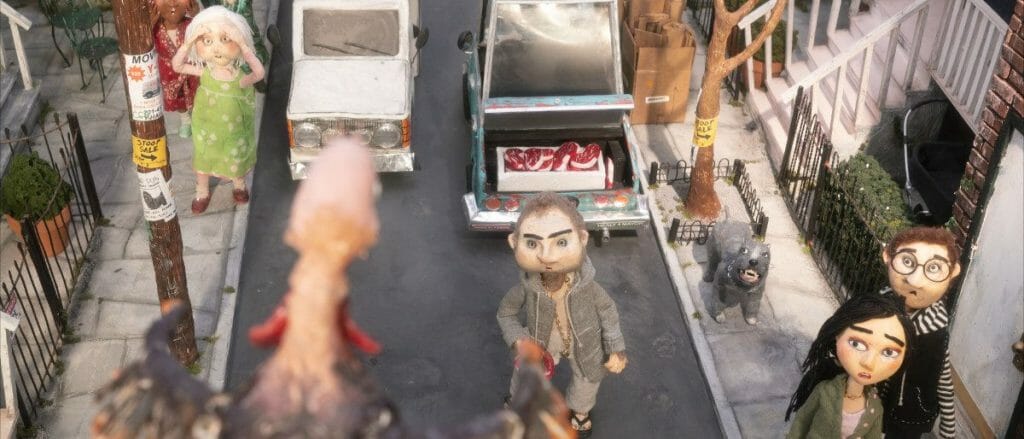
Tell us about your journey into animation. What inspired you to become an animator, how did you learn the craft, and what kind of animation work do you do now?
Yoo: I had some success as a fashion designer in my previous career back in NYC, butI always yearned for more. Becoming a mother to an awesome girl made me grow a big heart, and I started making a stop motion, lullaby music video for her, followed by ABC phonic videos.
This got me hooked. I didn’t want animation to be just an expensive hobby, and so I went back to school to learn the fundamentals of animation and finished my MFA in animation at USC. Going back to school to learn animation was the best decision. I love stop motion animation and I intend on continuing my love with the medium to tell the stories I want to tell.
What resource provided by this program was the most helpful or beneficial to you in making your short?
Yoo: I learned so much from two mentors I had, Gabrielle Utsey and Diana Theobald. These two amazing mentors honored the story I wanted to share with so much care and insights. They taught me so much about the story beats and most importantly, how to lead with thoughtfulness and kindness that was so inspiring to me. I always felt safe in their hands.
What has been your biggest lesson or takeaway in participating in the Max and WB Discovery Access Animated Shorts Program?
Yoo: That our voices matter. The experience guided me in honing in on what I want to do in the future in the animation space. When I first started to get into stop motion animation in 2017 as a hobby, I thought I should be a fabricator. Then I went to USC and thought I should be a stop motion animator.
After working on my own animated shorts and participating in Max and WB Discovery Access Animated Shorts Program, I realized I want to be a storyteller and there is nothing to stop me from doing what I love doing.
What’s next for you in animation?
Yoo: I finished 5 stop motion shorts in the last 4 years while finishing up my MFA degree in animation at USC. In all honesty, I’m pretty exhausted. I need to recharge and spend some quality time with my family, so I am taking 3 months off this summer in Korea. After that, I have plans to work on another comedy stop motion short and a music video.
Episode 3 – Kent Hammer
Dominick Green’s episode is about Kent Hammer, a confident and highly successful businessman with a loving family. Kent slowly loses touch with reality through a psychotic episode and descends into madness. Kent befriends his briefcase as it talks to and guides him through his journey, but other office supplies may not be as trustworthy or helpful.

Tell us about your journey into animation. What inspired you to become an animator, how did you learn the craft, and what kind of animation work do you do now?
Dominick: I started animation during the pandemic lockdown because I wanted to be an artist again. I felt like I was wasting my life grinding video games after work. After seeing and becoming inspired by Adult Swim’s “Smalls,” I downloaded Blender and started learning to animate on YouTube. Even though I like to draw, 3D felt natural since I was on the computer so much already.
I am self taught in 3D, mainly learning through YouTube, and trial and error. I do everything in my personal projects but I for sure get excited when it’s finally time to animate things. So I mainly work on personal projects which are short cartoons for Instagram. Expressing myself artistically is important and helps keep me happy, so I like to have freedom and make whatever dumb cartoon or idea comes to mind.
What resource provided by this program was the most helpful or beneficial to you in making your short?
Dominick: The whole process was super beneficial to myself as an artist and person. I learned a lot about 3D, but the most beneficial resources were the ones that helped to “fill in the cracks” on things I’d never done before like writing a script, designing characters, storyboards, or casting voices.
Before making this episode, I would draw a storyboard in MS paint or write dialogue on my phone. I’d then get my friends to record lines. Meeting with professionals who could guide me, and share their experiences and knowledge about animation pipeline processes was super beneficial.
At one point in this program, I was listening to professional writers on a video call. They talked about how everything they write still feels dumb, bad, and or cringey to them. Hearing that accomplished and professional writers have the same struggles I have and helped me push forward through the writing process.
What has been your biggest lesson or takeaway in participating in the Max and WB Discovery Access Animated Shorts Program?
Dominick: Looking back, I think the biggest learning curve was learning to manage my time on the project on top of everything I have going on in my life. I had to make the decision to put a lot of things on hold and come back to them later if I wanted this project to be as good as I envisioned it. I have a tendency to try to take on the world in my life and just do everything all at once. Devoting my time to the project so exclusively gave me a lot of meaning and purpose in my life over the last year.
What’s next for you in animation?
Dominick: I’m not really sure! I like to look at what’s right in front of me rather than setting big goals that are gonna break my heart if I fail at them. Currently, I’m making a lot of short whimsical cartoons, and I’m hoping to pitch and develop ideas for more shorts!
Episode 4 – Yellowbird
In Tsvetelina Zdraveva and Jerred North’s episode, a young immigrant in New York City receives tragic news from overseas, and must choose between going home or staying in the US to maintain her legal status.
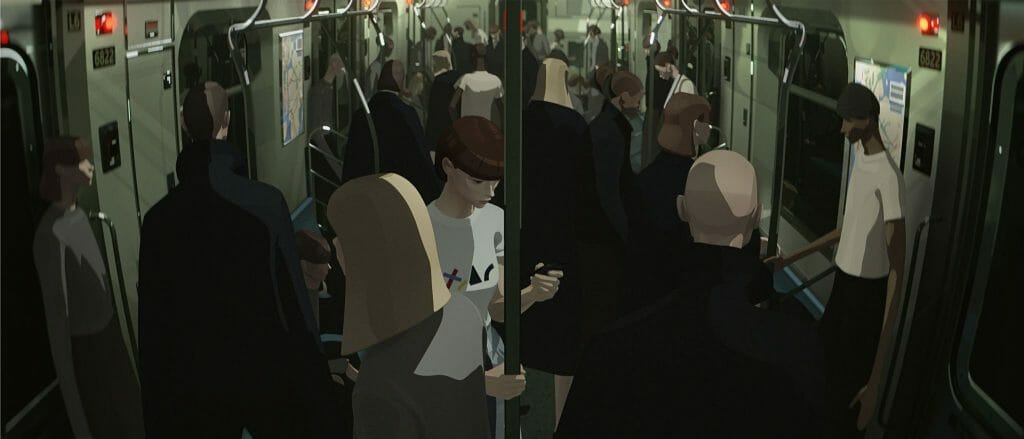
Tell us about your journey into animation. What inspired you to become an animator, how did you learn the craft, and what kind of animation work do you do now?
Tsvetelina and Jerred: When we first met, Jerred was working as a cinematographer and a writer, and Tsvet as an architect. We were looking for ways to collaborate together after hours, and quickly found 3D and animation to be a good middle ground for our individual skill sets.
Our first project was for NASA back in 2016, and we pitched it as a blend of 2D painted textures and 3d characters and environments, similar to this film. We learned a lot about our own animation workflow on that job. With many more projects behind us since then, we were excited to try this approach again with Yellowbird.
What resource provided by this program was the most helpful or beneficial to you in making your short?
Tsvetelina and Jerred: The Max X WBD Access Program hasn’t just given us the practical resources to help create our animated short, it has given us an incredible network of mentors and animation professionals. The program has also given us a wonderful community of other creators who learn from and support each other. Animation can be a solitary marathon, and we are grateful for the inspiring and supportive environment this program continues to create for all of us.
What has been your biggest lesson or takeaway in participating in the Max and WB Discovery Access Animated Shorts Program?
Tsvetelina and Jerred: Over this last year we’ve had the chance to stress-test our pipeline and adapt it to a much larger team than we’ve had on our previous projects. The artists we were able to work with are people we’ve admired for years, some of the best in the world, and we’ve learned so much from all of them.
What’s next for you in animation?
Tsvetelina and Jerred: Both the storytelling approach and visuals of Yellowbird are very tied to our personal experiences and give us a foundation we’re excited to develop and explore in our next projects. We have several series and feature-length ideas that we look forward to getting to pitch soon.
Episode 5 – Monstr
Tank Standing Buffalo and Xstine Cook’s episode tells the true story of a young artist who confronts his inner demons while apprenticing with a northwest totem carver after the death of his beloved. The questions below were answered by Tank Standing Buffalo.
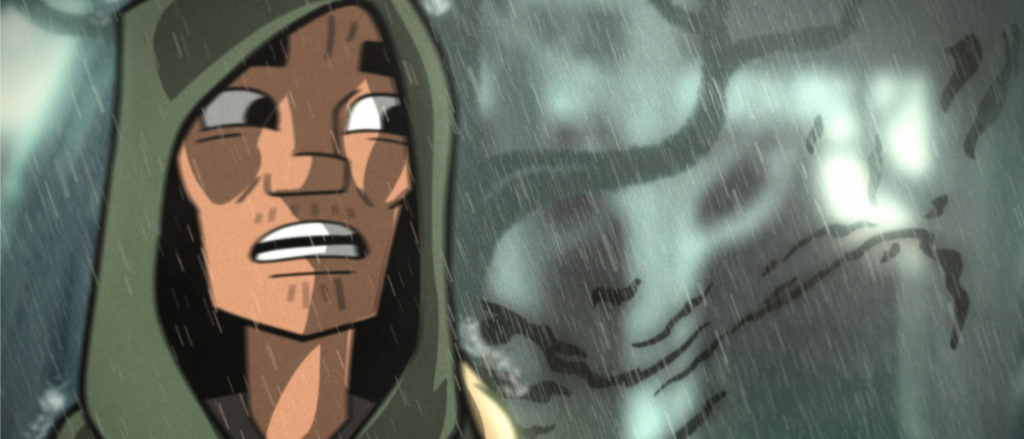
Tell us about your journey into animation. What inspired you to become an animator, how did you learn the craft, and what kind of animation work do you do now?
Tank: The movie La Bamba made me believe that animation was a possible path for me. In the movie, Richie Valen’s brother, Bob (played by Easi Morales) works as a garbage man. One day on his route, Bob finds some Woody Woodpecker animation cells in the garbage. This sparks something in his imagination.
Throughout the movie, Bob tries his best to lay his troubled past to rest in pursuit of art. I identified more with the character of Bob than any other straight-laced personality in animation. For the first time, I saw a family similar in ways to my own navigating their way to professions through non-traditional channels. I emulated Bob and a few other of my favorite outlaw artists and chose a non-traditional path in the pursuit of art.
I enrolled at Quickdraw Animation Society in 2015. After completing a 12 week introductory to animation course, I applied for QAS’s Chris J. Melnychuk Memorial Scholarship which I received. I have been animating almost every day since then.
For the last few years I have been making autobiographical cartoons. The more I focused on honesty over style in my storytelling, the more interest my cartoons seemed to attract. I am forever grateful for the experiences animation has provided. The amazing artists, producers, and actors I have had the privilege of working with has been a dream come true.
What resource provided by this program was the most helpful or beneficial to you in making your short?
Tank: Every aspect from start to finish was incredibly helpful. I enjoyed our weekly meetings with our team, the quality of the artwork presented always brought me much joy. Many of the master classes were powerful, getting the chance to talk with professionals in the industry meant a lot to me.
One creator in particular was very honest about where he came from and the challenges he faced to get to where he is now, that was very inspiring to me. I felt maybe there could be a place for me at the big table after all.
What has been your biggest lesson or takeaway in participating in the Max and WB Discovery Access Animated Shorts Program?
Tank: My biggest lesson and favorite experience was working with an actual team of animators. Before Monstr with Max, I mostly worked by myself. Storyboarding, animating, compositing and editing on my own like a monk holed up in his tower, feverishly writing his manuscripts …spiritually obsessed and sequestered.
Our team was so fun to work with, bringing their talents to areas that I struggled with was a welcomed opportunity. I am honored that Max afforded me this chance to tell my family back home that I made it all the way to the top with nothing more than drawing pictures. I am hoping to build on the relationships we have made at Max and develop other more elaborate stories.
What’s next for you in animation?
Tank: Currently, we have a couple projects in various stages of early pre-production. We’ll see how much attention we can attract to these projects once the basics are in place but I am itching to direct a feature length piece.
Any producers out there looking to back rising talent with unique perspectives, I have the project for you!
Episode 6 – Aroon
This episode by Miriam Presas tells the story of a deluded hero who has trapped himself within a storybook legend. After a harrowing experience, the hero starts to question his morality, his purpose, and what makes his life worth living.
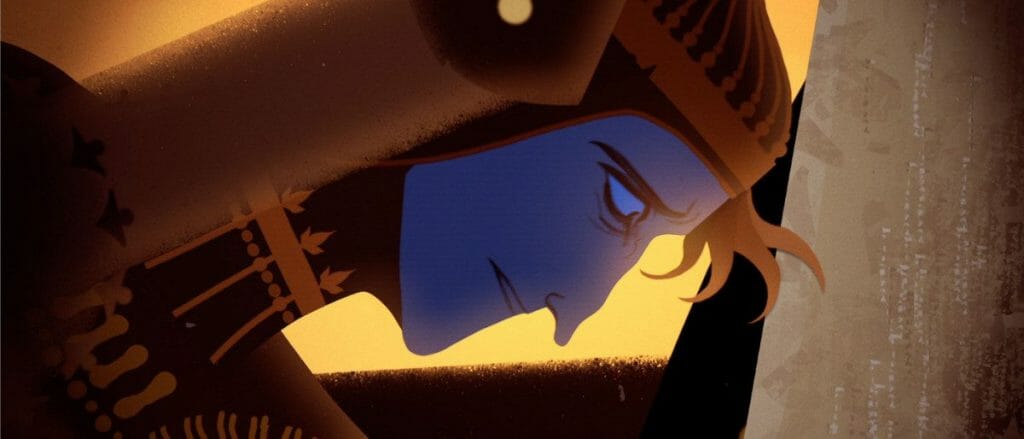
Tell us about your journey into animation. What inspired you to become an animator, how did you learn the craft, and what kind of animation work do you do now?
Miriam: I actually started out in concept art and visual development. For a long time I was really certain that sticking to a path in design was as far as my career was going to take me, but, I’ve always felt a different sort of excitement for the entire process of filmmaking and the amount of creative potential that unleashes.
My journey in learning more about the process of animation has been both extremely rewarding and very challenging towards my ideals of what can be possible because of how visual my ideas are. Although I’m still at an early start, I feel very confident that the challenge to my perspective will make me a stronger artist, and I can feel it making me feel more excited about experimental and counter-culture animation.
What resource provided by this program was the most helpful or beneficial to you in making your short?
Miriam: I actually always found myself learning most when I could hear my mentors talking to each other and to myself. My experience has always been one small fragment of the entire pipeline. When it came to listening to the organization and collaboration language involved in communicating effectively, I found myself learning so much. Now I’m developing those same skills and I’m able to communicate much more effectively to teams and other artists. I don’t think I realized previously how powerful that skill was.
What has been your biggest lesson or takeaway in participating in the Max and WB Discovery Access Animated Shorts Program?
Miriam: My biggest takeaway from the program was being able to confront my ambition more head on. I think previously, I had started pushing myself, but being a part of this program became fully shoving myself into the open expanse of the possibilities.
What’s next for you in animation?
Miriam: I’m not entirely sure yet! This opportunity presented a lot of challenges that often scared me and could make me feel unsure about myself, but the feeling I get from watching incredible animation that explodes with the passion and love of artists has remained unchanged. I know that I want to keep feeling that way for the rest of my career, so I’ll keep writing stories, drawing characters, and painting worlds for the rest of my life.
Episode 7 – Kimotiwin: The Act of Stealing
Keara Lightning and Caeleigh Lightning’s episode tells the story of Tiska. To steal back a flower that is special to her lover, Tiska embarks on a dangerous journey across an overgrown landscape, fighting demons in a post-apocalyptic city.
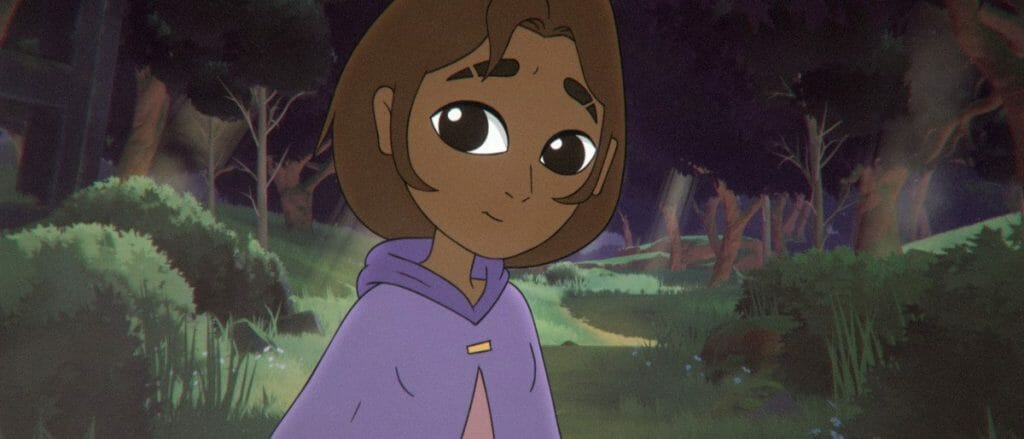
Tell us about your journey into animation. What inspired you to become an animator, how did you learn the craft, and what kind of animation work do you do now?
Keara and Caeleigh: We are a creative team of two queer Indigenous sisters who grew up watching animations like Adventure Time, Inuyasha, Pokemon, and Ghibli films. Together we started creating visual novels under the name Studio Ekosi, with Keara writing and Caeleigh illustrating.
We create stories that are set in fantasy worlds like the ones in the media we grew up with, while weaving in our particular experiences and trying to showcase the type of queer Indigenous characters we’ve wished to see.
We dreamt of making stories together since we were young, and with no resources but the support of the Indigenous game developers community, we started making games. This program has given us the incredible opportunity to bring those storytelling skills into animation and follow a lifelong dream.
Caeleigh: I always loved the character designs and art in these shows and as a kid would create my own characters for almost every cartoon I watched. I enjoyed designing characters that I could relate to and placing them in the worlds of my favorite shows. Later on I discovered I could animate my characters and started making small animations using MS Paint and Windows Movie Maker.
Keara: I came to love animation again as a teenager when I was going through a dark time in my life. The colorful worlds and over-the-top characters were a contrast to what I was experiencing in real life. I saw that by playing with color, transformation and abstraction, an animated show could explore emotions and stories in creative ways that live action could not.
What resource provided by this program was the most helpful or beneficial to you in making your short?
Keara and Caeleigh: In the process of writing our script, the screenwriting master class along with mentorship and continuous feedback was very helpful. Our previous stories have been in interactive formats, a format which has a focus on worldbuilding and doesn’t have the time restrictions that an animated short has.
Script writing support was really crucial to help us learn how to turn the story and the world we came into the program with, into a full story arc told within 5 minutes. We were also provided with Harmony classes with Toon Boom, which was so helpful for supporting our skills within the program, as well as to take into the future of our careers.
What has been your biggest lesson or takeaway in participating in the Max and WB Discovery Access Animated Shorts Program?
Keara and Caeleigh: Many of the mentors and the masterclasses in the program have stressed the importance of finding your personal style and voice in storytelling. Our biggest “aha” moment was when we switched the main relationship in the story to a queer romantic relationship.
We had been struggling with reworking the script for a bit, trying to get a setup for the story that resonated. When we took a step back and looked at the art we usually created, we saw cute, tender, queer relationships were at the heart. Once we then came up with our second main character and realized that would be the grounding relationship in the story, we were re-rooted into the type of characters we identify with and are excited to see on screen.
What’s next for you in animation?
Keara and Caeleigh: Something else we’ve learned in this program is that you simply can’t do everything at once, although we do try. Both of us are also graduate students and we plan to focus on finishing our Master degrees, while we incorporate our studio as a company, before deciding on our next project.
Our dream is to develop a series in the same Indigenous fantasy style of Kimotiwin. With the support and mentorship we’ve received in this program, we feel we’ve developed immensely as artists by building a belief in the importance of these stories, and we’ll be holding on to that belief as we move forward in our careers.
Episode 8 – Leech
In Aalaa Mohamed’s episode, a vampire obsessed with the quality of the blood they consume poses as a health coach to ensure they can control their clients’ lifestyles. This is the story of Minna, one victim who attempts to break free.
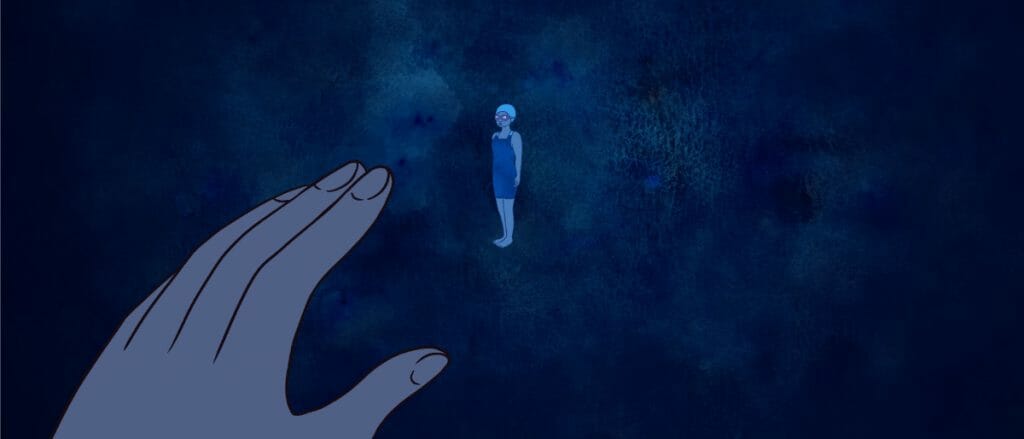
Tell us about your journey into animation. What inspired you to become an animator, how did you learn the craft, and what kind of animation work do you do now?
Aalaa: I’ve loved drawing since I was a kid. My first foray into the world of anything animation-related was making paper dolls and drawing comics. I drew inspiration for my art and writing from animated films, anime, and fantasy books. I was a self taught artist until high school, where I drew my first storyboard.
My friend gifted me an artbook and I remember thinking “that’s what I want to do” while looking at the character sketches. In college I took traditional art classes for drawing as well as classes for entertainment design (game design, comics, art for animation, costume design, etc). Gesture drawings, photo studies, designing characters for personal projects and creating storyboards around them helped me hone my craft as a character designer and story artist.
What resource provided by this program was the most helpful or beneficial to you in making your short?
Aalaa: The mentorship and opportunity to get feedback on my work was invaluable. Meeting with my mentor, Jordan Askins, kept me motivated and helped me really amp up the story. The workshops with Script Anatomy were also a lot of fun and so was the chance to work with Kristi Reed during the voice recording. I’m so happy to have been a part of this program because I got to try on a lot of different hats and work with some really incredible people.
What has been your biggest lesson or takeaway in participating in the Max and WB Discovery Access Animated Shorts Program?
Aalaa: One of my biggest takeaways is that animation is all about collaboration and communication. On a personal note, the experience also taught me that there’s a place for me in animation and to value my voice.
What’s next for you in animation?
Aalaa: Putting together pitches, drawing and writing new stuff, and hopefully getting more production experience!


